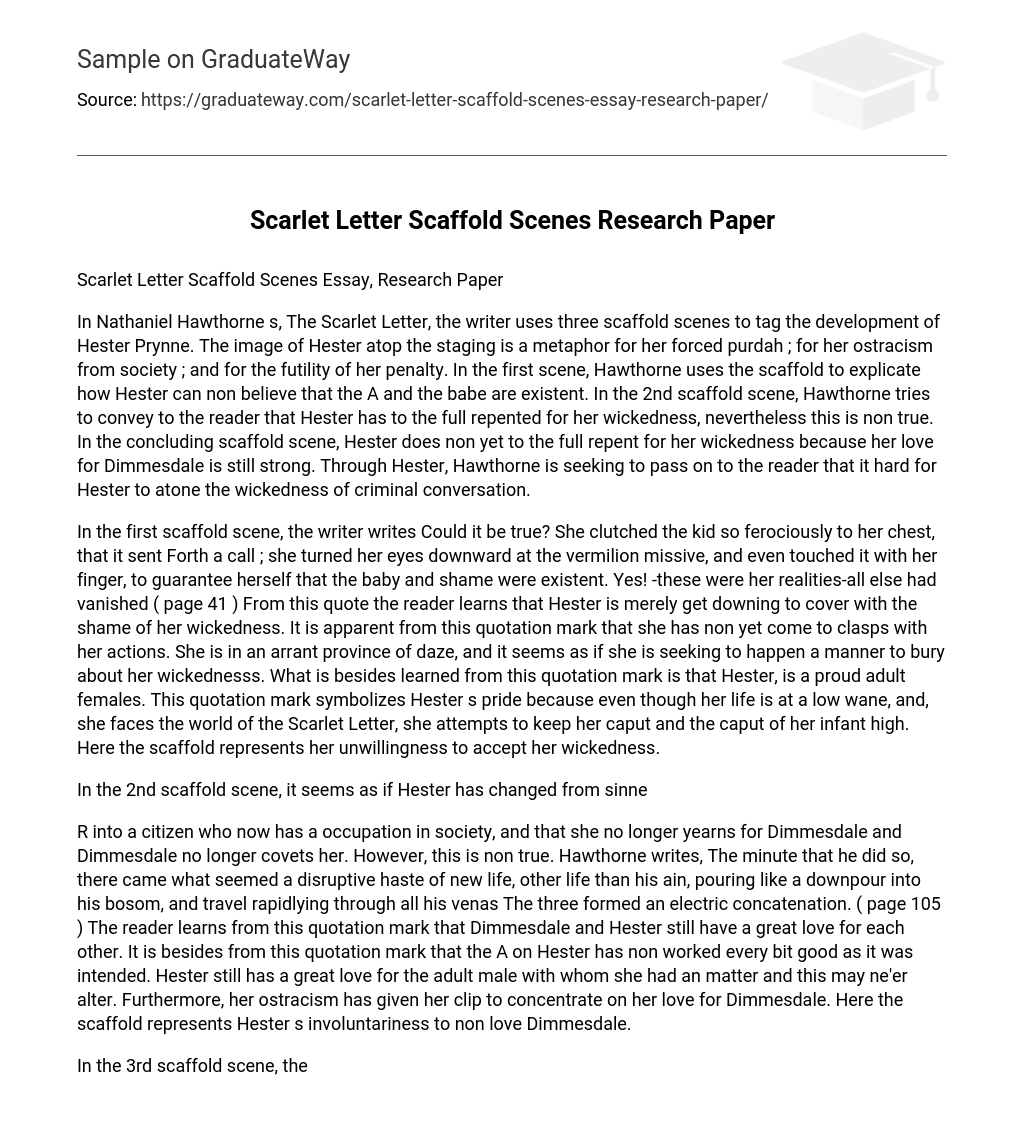Essay and research paper discussing the scaffold scenes in The Scarlet Letter.
Nathaniel Hawthorne’s The Scarlet Letter illuminates the growth of Hester Prynne through the use of three scaffold scenes. These scenes serve as a symbolism for Hester’s enforced isolation, her rejection by society, and the futility of her punishment. In the first scene, the scaffold demonstrates Hester’s disbelief regarding the reality of the letter A and her child. The second scaffold scene aims to convey that Hester has fully repented for her sin, despite the falsehood of this claim. In the final scaffold scene, Hester’s love for Dimmesdale prevents her from completely repenting for her sin. Hawthorne communicates through Hester that it is challenging for her to atone for the sin of adultery.
In the first scaffold scene, it is evident that Hester is struggling to accept the shame of her sin. She tightly holds her baby to her chest, confirming their existence and the reality of her sinful actions. It is clear that she has not yet come to terms with what she has done and remains in a state of shock. Her desperate attempt to forget about her sins is apparent. Furthermore, this quote demonstrates Hester’s pride as a woman. Despite facing public humiliation and bearing the consequences of wearing the Scarlet Letter, she strives to maintain her dignity by holding her head high. The scaffold in this scene symbolizes her refusal to acknowledge her sin.
In the second scaffold scene, it appears that Hester has transformed from sin.
R has transformed into a citizen with a new occupation in society, indicating that she no longer desires Dimmesdale and Dimmesdale no longer desires her. However, this claim is not truthful. According to Hawthorne, when Dimmesdale reveals his secret, he experiences a sudden surge of new life, different from his own, flowing through him. This connection between all three characters is compared to an electric chain. This quote reveals that Dimmesdale and Hester still harbor a deep love for each other. Furthermore, it suggests that the scarlet letter on Hester’s chest has not achieved its intended purpose. Hester’s love for the man with whom she had an affair remains strong and may never change. Additionally, her exile has given her the opportunity to focus on her love for Dimmesdale. In this context, the scaffold symbolizes Hester’s unwillingness to stop loving Dimmesdale.
In the third scaffold scene, Hester’s feelings for Dimmesdale remain unchanged. “Shall we not meet again? Shall we not spend our immortal life together? Surely, certainly we have redeemed one another, with all this suffering! You look far into infinity, with those bright dying eyes!” (page 175) This quote once again highlights the love that Hester and Dimmesdale still have for each other. Despite being labeled as a fornicator, Hester is considering spending her eternal life with her lover. The scaffold symbolizes the ineffective nature of the punishment because it does not change Hester in any way.
Overall, Hawthorne employs three separate scaffold scenes to highlight Hester Prynne’s progression. While the first scaffold instance intends to shame and elicit repentance from Hester, it ultimately fails to achieve its desired effect. Hester’s resilient demeanor and strong character shield her from the taunting of others. Additionally, the red letter does not alter Hester’s deep affection for Dimmesdale or her longing to be with him. Ultimately, both the red letter and the scaffold serve as symbols of ineffective punishment.





